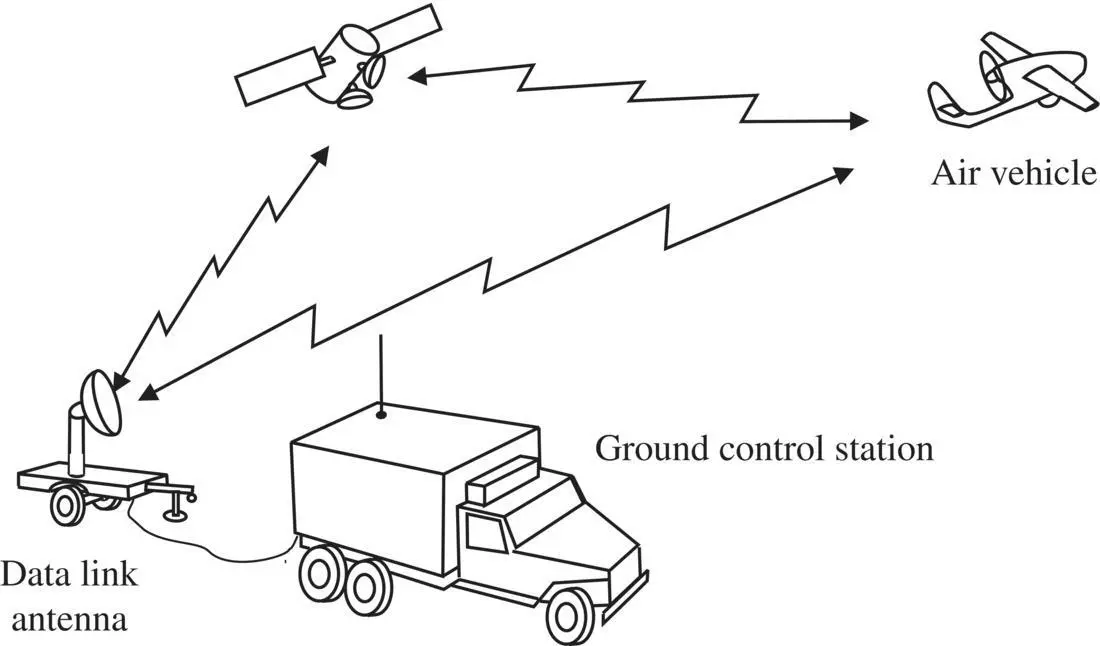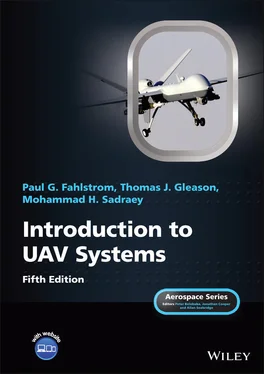The Global Hawk was effectively used during the first year despite being in the early stages of developmental. The Pioneer, the Shadow, the Hunter, and the Pointer were used extensively.
The Marines flew hundreds of missions using Pioneers during the battle for Fallujah in 2004 to locate and mark targets and keep track of insurgent forces. They were especially effective at night and could be considered one of the decisive weapons in that battle.
The armed version of the Predator, mini‐UAVs such as the Dragon Eye, and a wide range of other UAV systems have been used on the battlefields of Afghanistan and Iraq and have proven the military value of UAVs.
Predator UAVs have been operational in Bosnia since 1995 and as part of Operation Enduring Freedom in Afghanistan and Operation Iraqi Freedom, flying more than 500,000 flight hours on over 50,000 flights. It is interesting to know that in 2002, an Iraqi MiG‐25 intercepted an air‐to‐air equipped Predator. Both fired missiles at each other, but MiG‐25 evaded but Predator was shot down.
During Operation Iraqi Freedom, the Global Hawk flew 15 missions, collecting over 4,800 images from March 18 to April 23, 2003.
1.2.8 Long‐Range Long‐Endurance Operations
After the 9/11/2001 terrorist attack on the World Trade Center in New York City, and during wars in Iraq and Afghanistan, US military explored the high value of UAVs in wars and even peace‐time operations. Afterward, there were multiple UAV applications around the world including the war with ISIS and Al‐Qaeda (2013–2017), many of which were long‐range long‐endurance wars. Three top UAVs that were employed for long‐range long‐endurance operations around the world are RQ‐4 Global Hawk, RQ‐1 Predator, and MQ‐9 Reaper. The Reaper with its missiles, sensors, and relatively long endurance is a UAV that transformed military combat.
During Operation Enduring Freedom (from November to September 2002 in Afghanistan), the Global Hawk provided more than 17,000 near‐real‐time, high‐resolution intelligence, surveillance, and reconnaissance images, flying more than 60 combat missions and logging more than 1,200 combat hours. By 2015, the Global Hawk surpassed 140,000 flight hours and 100,000 combat flight hours and exceeded operational performance targets. The following summarizes three recent projects for HALE UAVs with a pseudo‐satellite mission.
In 2020, in partnership with NASA, the Swift Engineering [3] has developed the Swift HALE UAV to demonstrate how a successful high‐altitude, long‐endurance flight can expand science research in a cost‐efficient and timely manner. This solar‐powered UAV has a wingspan of 72 ft and weighs less than 180 lb, flies 10‐ to 15‐lb payloads at a time, and is designed to operate at an altitude of 70,000 ft for 30 days or more.
Furthermore, BAE Systems is developing a solar‐powered, stratosphere‐flying UAV that can act as a backup option to disabled communications satellites. The Phasa‐35 is designed to operate at altitudes of up to 70,000 ft. This HALE UAV with a wing span of 115 ft can remain in the air for up to a year without returning to Earth.
Moreover, the Airbus Zephyr unmanned aerial system has been designed and tested as an ultra‐light high‐altitude pseudo‐satellite. However, in 2020, the UAV broke up in flight after encountering unstable atmospheric conditions, which resulted in a series of uncommanded rolls and an uncontrolled spiral descent.
1.3 Overview of UAV Systems
The primary element of an unmanned aerial system is the air vehicle (AV). A number of titles are employed in the literature for the air vehicle, including: (1) unmanned aerial vehicle, (2) remotely piloted vehicles (RPV), (3) radio‐controlled (RC) plane, (4) model airplane, (5) remotely piloted aircraft (RPA), and (6) drones. The term RPV is an older name, and currently not much used. The term “RC plane” and “model airplane” are primarily used by hobbyists, aeromodellers, and Academy of Model Aeronautics (World’s largest model aviation association) 1 , and “drone” is mainly employed by the media.
All, of course, are unmanned so the name “unmanned aerial vehicle” or UAV can be thought of as the generic title. To the purist, the “remotely piloted vehicle” is piloted or steered (controlled) from a remotely located position, so an RPV is always a UAV, but a UAV, which may perform autonomous or preprogrammed missions, need not always be an RPV.
In the past, these aircraft were all called drones, that is, a “pilotless airplane controlled by radio signals,” according to Webster’s Dictionary . Today the UAV developer and user community do not use the term “drone” except for vehicles that have limited flexibility for accomplishing sophisticated missions and fly in a persistently dull, monotonous, and indifferent manner, such as a target drone. This has not prevented the press and the general public from adopting the word “drone” as a convenient, if technically incorrect, general term for UAVs. Thus, even the most sophisticated air vehicle with extensive semiautonomous functions is likely to be headlined as a “drone” in the morning paper or on the evening news.
Whether the UAV is controlled manually or via a preprogrammed navigation system, it should not necessarily be thought of as having to be “flown,” that is, controlled by someone that has piloting skills. UAVs used by the military usually have autopilots and navigation systems that maintain attitude, altitude, and ground track automatically.
Manual control usually means controlling the position of the UAV by manually adjusting the heading, altitude, speed, etc., through switches, a joystick, or some kind of pointing device (mouse or trackball) located in the ground control station, but allowing the autopilot to stabilize the vehicle and assume control when the desired course is reached. Navigation systems of various types (global positioning system (GPS), radio, inertial) allow for preprogrammed missions, which may or may not be overridden manually.
As a minimum, a typical UAV system is composed of air vehicles, one or more ground control stations (GCS) and/or mission planning and control stations (MPCS), payload, and data link. In addition, many systems include launch and recovery subsystems, air‐vehicle carriers, and other ground handling and maintenance equipment. A very simple generic UAV system is shown in Figure 1.1.

Figure 1.1 Generic UAV system
The air vehicle is the airborne part of the unmanned aerial system that includes the airframe, propulsion unit, flight controls, and electric power system. The air data terminal is mounted in the air vehicle, and is the airborne portion of the communications data link. The payload is also onboard the air vehicle, but it is recognized as an independent subsystem that often is easily interchanged with different air vehicles and uniquely designed to accomplish one or more of a variety of missions. The air vehicle can be a fixed‐wing airplane, rotary wing (single or multiple), or a ducted fan. Lighter‐than‐air vehicles are also eligible to be termed UAVs.
1.3.2 Mission Planning and Control Station
The MPCS, also called the GCS, is the operational control center of the UAV system where video, command, and telemetry data from the air vehicle are processed and displayed. These data are usually relayed through a ground terminal, which is the ground portion of the data link. The MPCS shelter incorporates a mission planning facility, control and display consoles, video and telemetry instrumentation, a computer and signal processing group, the ground data terminal, communications equipment, and environmental control and survivability protection equipment.
Читать дальше













